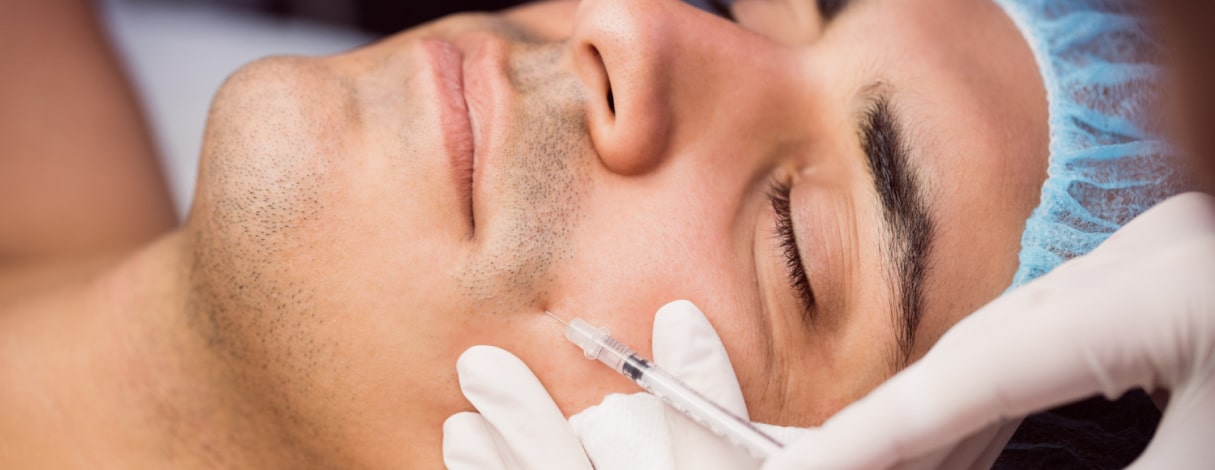Hyaluronic acid is a natural substance present in the human body, predominantly in the skin, connective tissues, and joints. Its ability to attract and retain water molecules is crucial for maintaining skin hydration, volume, and elasticity.
The widespread use of hyaluronic acid (HA) in cosmetics and injectables has revolutionized beauty treatments, providing effective solutions for enhancing natural beauty. Despite the established safety and versatility of HA-based treatments, healthcare professionals must remain vigilant regarding potential side effects and adept at their prevention and management. This article focuses on identifying early signs of side effects from injectable HA treatments, detecting them, and outlining appropriate medical responses.
Types of Adverse Effects of Hyaluronic Acid
Hyaluronic acid (HA) injections are generally safe, but they can occasionally cause adverse effects, ranging from mild to severe. Here’s a breakdown of potential negative effects:
Common and mild side effects:
- Swelling: Typically subsides within a few days but can last up to two weeks in some cases.
- Bruising: Temporary and resolves within a week or two.
- Temporary redness or erythema: Usually fades within hours to a few days.
- Mild pain or discomfort: Often resolves quickly after the procedure.
- Itching: Relatively uncommon, mild, and transient.
Less common reactions:
- Small lumps or bumps: Temporary and can often be massaged out by the healthcare provider.
- Infection: Rare but possible; signs include redness, swelling, pain, and pus formation. Immediate medical attention is necessary if infection is suspected.
Rare and severe side effects:
- Allergic reactions: Immediate medical attention required; rare but possible.
- Vascular complications: Injection into blood vessels can lead to skin discoloration, tissue damage, and in very rare cases, tissue death (necrosis).
- Nodules or granulomas: Small, firm irregularities at the injection site that may require additional treatment.
Regarding oral intake as a food supplement, HA typically does not cause adverse reactions. However, in patients with liver disease, elevated HA levels in the bloodstream can potentially lead to thrombosis. Such patients are advised against using hyaluronic acid injections. For patients without liver conditions, there is no evidence of negative health impacts from HA injections.
Detecting Early Signs of Adverse Reactions to Hyaluronic Acid
While hyaluronic acid products are generally well-tolerated, it’s important to recognize early signs of potential side effects for prompt management and patient safety. Here are common early signs to watch for:
- Mild Swelling: Around the injection site is common and usually resolves within a few days. Excessive or persistent swelling may indicate a reaction.
- Bruising: Can occur due to the injection process. Minor bruising is expected, but extensive or unexplained bruising should be monitored.
- Temporary Redness and Discomfort: Normal after injections. Persistent redness or severe discomfort should be closely monitored.
- Small Lumps or Bumps: Near the injection site, which are typically temporary and can often be massaged out by the healthcare provider.
- Allergic Reactions: Symptoms such as itching, rash, hives, facial swelling, dizziness, or difficulty breathing indicate an allergic reaction. Immediate medical attention is necessary in such cases.
How to Manage Hyaluronic Acid Reactions
To effectively manage reactions to hyaluronic acid, healthcare professionals should follow these steps:
- Conduct a thorough patient assessment, including medical history and allergies, to identify any risk factors or previous reactions.
- Monitor the treated area for early signs such as excessive swelling, bruising, or the development of lumps.
- Promptly address signs of allergic reactions or severe adverse events with appropriate treatments like antihistamines or epinephrine. Consider involving specialists if needed.
- For mild to moderate side effects, reassure patients that symptoms are typically temporary. Recommend at-home care such as using ice packs and over-the-counter pain relievers.
- Be prepared to administer hyaluronidase to dissolve filler or manage complications if required.
Aftercare and Prevention of Hyaluronic Acid Side Effects
Effective management of hyaluronic acid (HA) side effects is complemented by crucial aftercare and prevention measures that enhance patient safety and satisfaction:
- Patient Education: Inform patients about post-treatment care, including avoiding strenuous activities, minimizing alcohol intake, and protecting treated areas from excessive sun exposure.
- Proper Dosage: Use appropriate amounts of HA fillers to prevent overcorrection and related symptoms.
- Follow-up Appointments: Schedule follow-up visits to monitor progress and ensure prompt resolution of side effects, contributing to patient satisfaction and well-being.
- Source Authentic Products: Obtain HA fillers from reputable suppliers like Medica Depot to mitigate risks associated with substandard products.
Conclusion
Managing HA side effects is essential for delivering safe and effective injectable treatments. Early detection, appropriate management strategies, and patient-centered care are key in navigating challenges and achieving positive outcomes. By prioritizing preventive measures and educating patients about potential side effects, healthcare professionals can uphold high standards of care while facilitating desired aesthetic improvements with confidence in patient safety.

